|
" If PCs Still Refuse to Help : De Vries leaves. The PCs are later killed in their sleep by members of the French resistance. The adventure has ended."
- from, Sandman: Map of Halaal, "Adventure One: The Sandman Comes" Ouch.
0 Comments
Next on my reading list: Sandman: Map of Halaal
James Wallis referenced this game in one of the RPG questionnaires that circulates around the interwebs as a game that has had a lasting influence on his game design. Jason Morningstar commented that the game had an impact on him as well. Shortly after that conversation, I read about the game in Shannon Appelcline's Designers & Dragons: the '80s and was intrigued by the idea of the game. So I found a cheap copy on ebay and ordered it up. Anyone out there ever play it? Thoughts? Impressions? I'll tell you mine when I'm done reading. I’ve had a lot of fun reading and thinking about Jonathan Tweet’s 1995 RPG Everway.
I knew going into it that the game used a “Fortune Deck” and a set of “Vision Cards” in some way, and I knew that Tweet, at some point in the text, makes the distinction between 3 approaches to resolution: karma, drama, and fortune. That’s the sum total of what I knew when I dove in. The game box includes three 7” x 8.5” books: a 160-page “Playing Guide,” a 14-page “Guide to the Fortune Deck,” and a 64-page “Gamemastering Guide.” You are instructed to start with the “Playing Guide,” to which both character players and GMs are openly invited. A little over the first third of the book is devoted to establishing the setting, a fantasy multiverse of worlds that the players can travel between via “gates.” The game itself is named after the main city in the main realm in the main sphere. Play is designed to create episodic and epic narratives as the PCs move through the spheres (spherewalking, as it’s called) solving problems and getting tangled up in local customs, mysteries, and what-have-yous. The next chunk of the “Playing Guide” (again, over a third of the text) is dedicated to character creation. Character creation in the game is really cool, using the “Vision Cards” to inspire players. The vision cards are regularly-sized cards with images of characters, situations, locations, scenes, and mythical creatures. They are beautiful and mysterious, working to suggest things but leaving a lot unanswered and only hinted at. The game comes with 90 of these cards, and there were two expansion sets of 90 more cards each produced before the game line was canceled. You spread out these cards on the table, and the players pick five cards to serve as inspiration for their characters. The cards might represent the character herself, someone important to her, where she comes from, the scene of some pivotal moment in her life – whatever the cards inspire. It’s a really cool way to begin character creation because the pictures can push you in directions you would not think to go, and the pictures in conjunction with each other can only drive you further in unexpected and interesting directions. And because all the cards are thematically appropriate to the tone and subject matter of the game, every character derived from the pictures will be well suited to the same universe. I also appreciate that the designers were thoughtful in their representations so the cards have people of every skin color represented, and most cultural depictions are non-Eurocentric. After selecting 5 cards as the inspiration for your character, the players share the cards and explain what they have drawn from them. Then players are invited to ask each other questions about the cards and the character being developed from them. This is the first game I know of (although my pool of knowledge is admittedly shallow) that has questions from other players as an explicit part of character creation. It feels like very modern tech, and I love it. The “Fortune Deck” is also used in character creation. The Fortune Deck is a deck of 36 cards, modeled on the major arcana of tarot decks. Each card has a regular “meaning” and a reversed “meaning” when played upside down. I put meaning in quotes because the printed meaning is hardly definitive. Like everything else in the game, the cards are suggestive and up for interpretation. For example, the Autumn card means “plenty” and reversed it means “want,” but what plenty and want mean can range through a great number of possibilities. In character creation, the players go through the cards of the Fortune Deck and pick one card to represent the character’s Virtue or strength, another to represent her Fault or weakness, and another to represent the character’s Fate. For the Virtue and Fault, you pick one meaning from the card, but for the Fate, you consider both meanings to create a set of poles for your character, the two possible paths you see before the character. For example, if you select The Fool, your two poles would be “freedom” on the one hand and “lack of connection” on the other. That could mean whatever you want, or you might not know exactly what that means at all but it feels right. Your character is forging her own path but runs the risk of isolating herself as she does so. What’s cool about all of these elements of character creation is that they are about how you as a player want to play your character. Who they are, what motivates them, where they are going, and where they have been. Moreover, each element potentially adds to the depth and complexity of your character and has the opportunity to push you into a direction you hadn’t considered, making the character’s starting form somewhat surprising to you as a player, which I find very attractive. The game uses the four elements to structure the characters’ stats: air, fire, earth, wind. That alone sounds clever but uninspired, but the execution of the stats is really well done. The real accomplishment is the presentation of the stats on the character sheet. Here’s how the book defines each of the stats: “Fire measures vitality, force, courage, speed and daring.” “Earth governs a hero’s health, endurance, fortitude, will, determination and resilience.” “Air determines intelligence, speech, thought, logic, analytical ability, oratory, and knowledge.” “Water governs intuition, sensitivity to that which is unseen and unspoken, receptivity, psychic potential, and depth of feeling.” All of those are reasonable categories. I’ve included a scan of the character sheet so you can see how the stats are mapped out there. You can see that each element is presented as a quarter slice of the pie. At the point of the slice is a one word summary of the element: Action, Might, Feeling, and Thought. Then each slice is joined to its neighbor by a commonality. Air and fire are both about energy, but air is a focused energy and fire is a forceful energy. Both fire and earth are about power, but fire is an active power and earth is a passive power. Earth and water are both about integrity, but earth is a resistant integrity and water is a receptive integrity. Finally, both water and air are about wisdom, but water is about silent wisdom while air is about spoken wisdom. This map defines all the corners of each element and does a great job of defining at a glance what each element covers during play. The problem with abstract concepts for stats is that they are work for players to remember during play, but the character sheet allows the designers to keep the flavor of the elemental division while removing the burden of memory from the players. For me, the visual design of the character sheet is as important as the conceptual design of the statistics. I’ve already rambled on too long, so I’ll skip discussing magic and powers for now. The reason I’ve spent so long on the character creation is because character creation and the resulting character and sheet are one half of the game in play. Everything the players need to play the game is there on their character sheet, and a great deal of what the GM needs to run the game is there on the character sheet as well. After covering the setting and detailing character creation, the rest of the “Playing Guide” and the entirety of the other two books are really about running the game as GM, but there aren’t really any “rules” to speak off. The system of play for Everway is entirely reliant upon the GM. The players say what their characters do and the GM determines the results of that reaction. That is the entirety of play in a single sentence. So what the remaining 80 or so pages of text are about teaching the GM how to make those decisions fairly, dramatically, and creatively. I expected the discussion of karma, drama, and fortune to effectively be a short essay within the text, but it’s really so much more than that. What Tweet does in the text is effectively attempt to breakdown what GMs do when answering the question what happens next? Sometimes the GM just decides that the action is a failure or a success. They look at the character sheet and decide that the character is or isn’t strong enough, magical enough, talented enough, or whatever to do the thing they want to do. Or the GM looks at the fictional positioning and decides that the character’s approach or tactic is likely to be effective or not. After evaluating the measurable facts of the situation, the GM declares success or failure. That whole process is called “karma” by Tweet. Sometimes the GM decides that it would be dramatically exciting if a character fails or succeeds or that things go sideways instead. Sometimes the GM decides that the character can’t get what she wants because it would short circuit the entire mystery or defuse the entire situation too readily. That decision process is called “drama” by Tweet. The dramatic ruling is based entirely on matters of the story and has nothing to do with what is likely or what a character is capable of. Finally, the GM sometime leaves the results of an action up to fate and employs some kind of randomizer, dice, cards or whatnot. That’s what Tweet calls “Fortune.” In the case of Everway, the GM can draw the top card from the Fortune Deck and interpret it as a favorable sign or an ill omen. The rules are very explicit that all of these ways of making decisions will overlap and occur concurrently. There is also a matter of taste, some GMs preferring to decide things by karma, others preferring to leave things to fortune, and still others constantly thinking of the dramatic impact of the actions on the story. But whatever your leaning as a GM, you draw on all three methods constantly. I found the analysis compelling and the breakdown impressive. The text is really an extensive guide to how to make decisions as a GM with a particular focus of how to GM this game. The guide teaches you how to interpret the statistics to determine likelihood of success, how to look at the prongs of the story to determine what is up for grabs and what needs to happen without interference, how to read the fortune cards to determine if they bode ill or well, all in an effort to teach the GM to be a fair and impartial judge of the character’s actions and the ramifications that follow. I of course had problems with plenty of the particulars. The discussion surrounding reading the outcome of a sample fight reminded me of nothing so much as Erick Wujcik’s Amber. In both game texts, the game wanted to use the numbers to determine outcome while still allowing for surprise and unexpected outcome, leading to a coy game between players and GM as the GM determines what course of action will be especially effective and the player tries to meet the GM’s determination. In the end, such play measures success by one player’s ability to read the mind of another, which is a pretty shitty system. And the idea that a GM will undermine a clever player by refusing to validate a character’s action because the GM is committed to a particular plot is offensive to modern RPG sensibilities. But these problems I had didn’t impact my ability to appreciate the crux of Tweet’s analysis. There’s nothing about the system itself that helps the players have an interesting and compelling game, since the system is the GM. There are no mechanics to propel play or story, nothing other than a set of resolution tactics, so I imagine that play is exactly as interesting as the skill of the players involved. With an inspired GM and lively players, I can see some very fun games coming from play, but there is nothing to keep the game from being ho-hum or even downright dull if the players and GM are unsure of themselves because there is nothing mechanical within the game to catch them and support them. The closest the game comes to providing a means to keep things lively is the Fortune Deck as a surprising tool for resolutions, and I do love the possibilities it holds. I was surprised to find that there is no XP or advancement system in Everway, especially since the game was designed with campaign play in mind.
What pre-1995 RPGs can you think of that were designed for multi-session play but that did not have any kind of XP or advancement system? The curious want to know! ETA: Maybe instead of advancement system I should say improvement system, by which I mean, there is no mechanical way for the characters' numbers or abilities to change. The characters can acquire stuff with magical properties through play, but they cannot themselves improve. Here's what I'm currently reading/studying: Everway.
Have you played? Tell me about your characters, your adventures, your experiences with the system, what blew you away, what troubled you, etc. And Gen Con is done!
Thankfully Ann was feeling better by Friday afternoon, so after dinner we played in two Games on Demand events, from 8:00 -10:00 and 10:00 - midnight. We played Ross Cowman's BFF with Ross himself and 3 delightful strangers. It's a lovely game, with beautiful art, neither of which was a surprise. We also played The Final Girl, which the GM/facilitator billed as "Murder Party," in which we would create a D-grade horror film. It was a rough gaming experience for us since our own personal styles and tastes were at odds with the other players at the table, but what can you do? It was only two-hours, and it gave us a lot to talk about and analyze on the trip home. Gaming style is one of those things I'm not aware of until it is contrasted with someone else's. Saturday morning I GM'd my first con game, Paul Riddle's excellent Undying. My only point of anxiety was that the game was set in London in 1940 during the blitz, and I wasn't familiar enough with the city to have ideas for hunting grounds on hand or good detailed descriptions of scene locations. I ended up looking at a lot of maps and reading up on neighborhoods, printing out pictures of war-torn London and other details so we could all be on the same descriptive page. The game went pretty much perfectly. The players were all in great creative shape and they leaned into their playbooks' status moves, trying to navigate the political landscape to come out on top. We had our climactic scene in the dead princep's lair with a 50+ blood-token-fueled blood ritual that brought her desiccated corpse back from the dead/undead to take vengeance on her killer. Three of the four players managed to trigger their status moves to become patricians, but it was clearly going to be a tense situation between them and the existing power structure. The fourth character had clearly backed the wrong horse, but not so openly that his fate was sealed. He would take a setback but be alive to fight another day. It was an exciting ending that suggested all kinds of possibilities for future play, and everyone left wanting more. I couldn't ask for anything more. (The picture is of the R-map from this game.) Saturday afternoon was spent playing games with our son and partaking in an MtG chaos draft (in which you are given three random packs taken from sets from the last 5 years or so ). Ann won it, so Orie was delighted to turn those prize winnings into more packs for drafting at our local game store next Friday. This morning was my second game of Undying, and it was . . . fine. Three players showed up, which for a Sunday morning is a pretty good win. The scenario was called "Undying: The Awakening" (set in Chicago during the World's Fair in 1893), and one woman thought she had signed up for Mage: The Awakening. Whoops. She decided to play, but her enthusiasm was certainly muted. Once play got underway, it was clear that two of the players did not like each others' style, but they forged on uncomplainingly. None of the players really leaned into their status moves, and I think my construction of the conflict didn't give them enough of a third side to maneuver to, all of which resulted in the play being rather reactive, responding to NPCs more than purusing anything proactively. We still managed to have an exciting climactic scene with shotguns to faces and near-deaths. All three said they enjoyed themselves, and I believe that was mostly true. I can say with confidence that none of them had a bad time? I think? I hit the dealer's floor one last time to pick up a couple of items my son planned on getting (but he was too tired this morning to join me), and then dragged my exhausted ass home. It was a great weekend. I'm really looking forward to sleeping tonight. As one who calls Indianapolis home, I want to welcome those of you who came here for Gen Con! Enjoy our wonderful city, even if only for a quick romp around the circle, and have an awesome time gaming for the next half-week.
I'll be RPing right alongside you, and I'll even be GMing my first games at a con--two games of Undying, which I'm pretty psyched about. See you there, you fantastic people! Day 1 of Gen Con is in the bag for me. Sadly, my wife was feeling poorly, so we didn't get a chance to play any games today. She is better now, but we'll take tomorrow slowly and see how it goes.
Our son had a hilarious story to share from his time in the playtest room for early-in-development games. He loves playtesting and was excited to get to do it again. He couldn't get into the game he wanted to test, so he picked one at random that described itself as a game about gangster wars on the streets of a Chicago-like town, full of violence and lawlessness and greed. "Oh no, was it too violent and lawless and greedy?" I asked "Dad. It turned out to be a Monopoly knockoff." "What?! Why would anyone re-tool Monopoly?!" "Oh yeah. You had criminal ventures instead of properties, like money laundering. Then, when you past go, you got two gangmembers, which you could send to battle other players gangmembers to take their properties. At that point, it was like Risk. "What?! Why would anyone take Monopoly and mash it up with Risk-style battles?!" "Oh yeah. You rolled 6 dice every time you attacked, no matter how many gangmembers you had, and the defender rolled 5 no matter how many gangmembers they had. Whichever side has the least number of gangmembers, that's how many dice both sides keep. So if your 5 guys attacked their 1 guy, you rolled 6 dice, they roll 5, you each keep the highest die, and ties go to the defender. So her 1 guy can destroy all 5 of yours pretty easily." "That's horrible!" "Oh yeah. We were all trying to get into fights as soon as we got gangmembers so they would die off. It was against the rules to attack a player if they had no gangmembers. So 6 of us were killing off our own guys as quickly as possible, and the last 2 were trying to duke it out." I was laughing out loud in the food court. "Oh, and the chance-card-things? Yeah, 'Drive by: roll a dice and lose that many gangmembers and that many turns.'" "What?! You could lose 6 turns on a die roll?!" "Oh yeah. That happened to one of the players, and the designer said, 'don't worry, they go by fast.' But with 8 players, that's 48 turns before you can do anything!" "The designer was running the game? Did he take feedback?" "'Take' it? Well, we gave it, but he swatted it all away. One guy said, 'there's a problem with the combat.' the designer said, 'No, there isn't.' It was ugly, and I hated it." But we were both laughing pretty hard by that point. His story might have been my favorite part of the con today, except for the game of Mars Colony that my wife and I started at lunch. Oh, and I did all my shopping today. I had a short list, as you can see in the picture. I hope you all had a great day today too. |
Jason D'AngeloRPG enthusiast interested in theory and indie publications. Archives
April 2023
Categories |
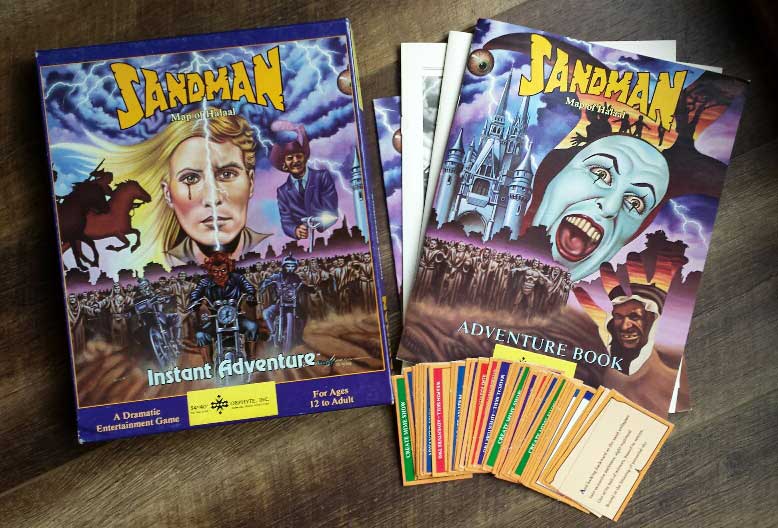
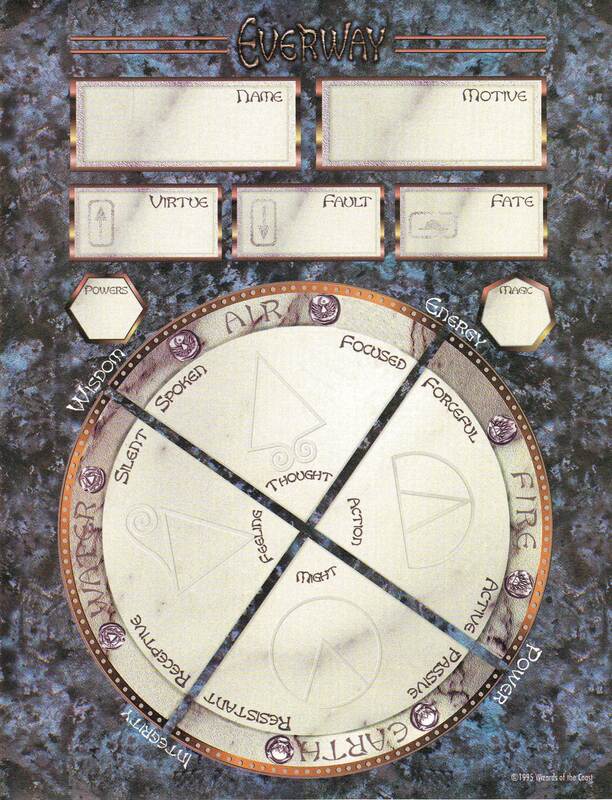
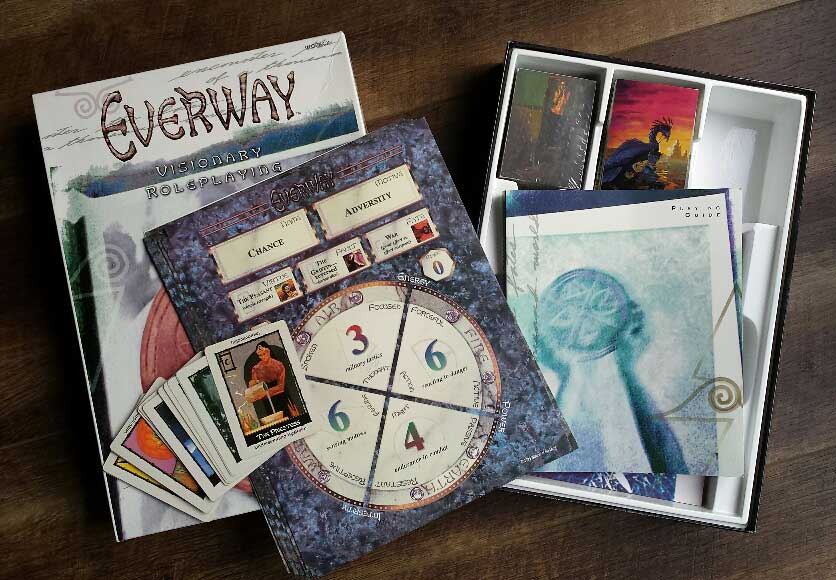
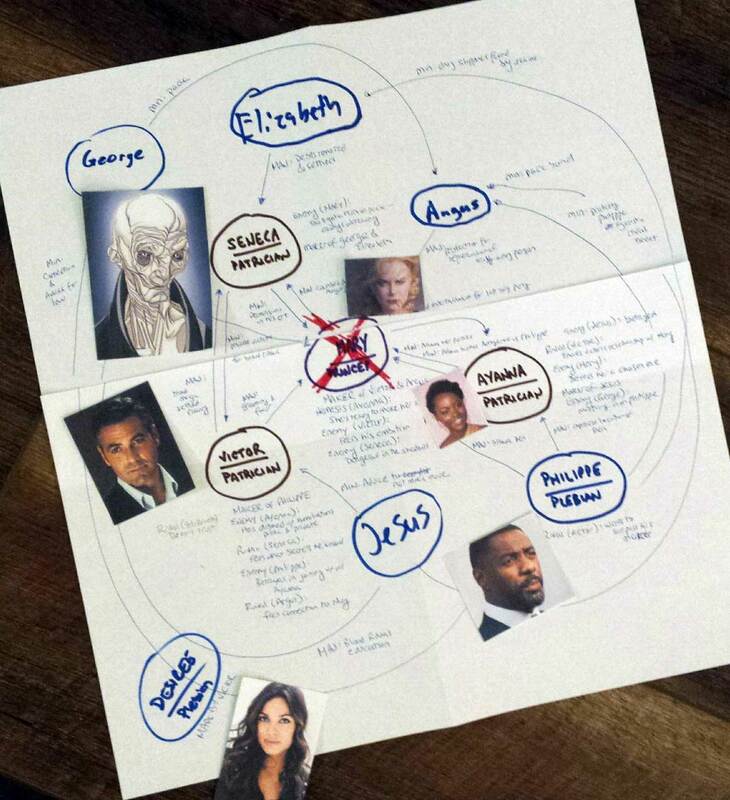
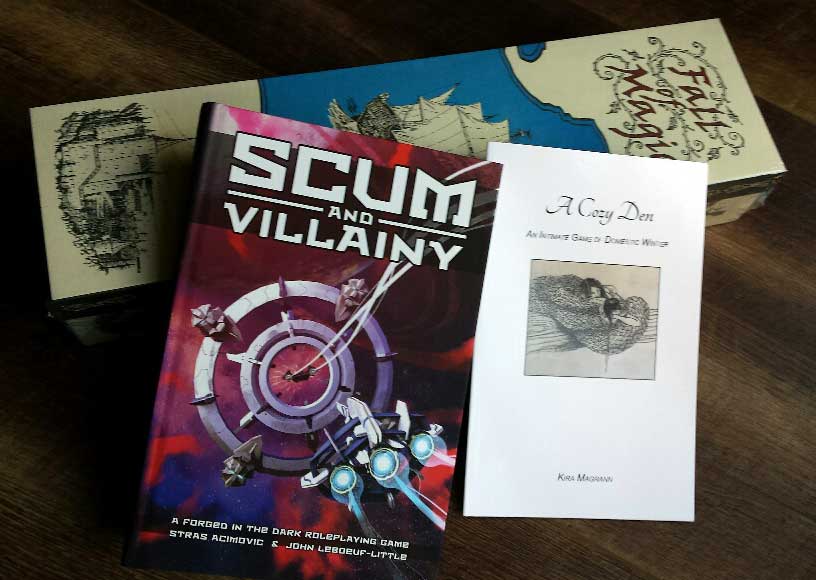
 RSS Feed
RSS Feed